#but then the mechanics and combat are SO smooth and the nemesis system is brilliant and the emergent gameplay is BRILLIANT
Explore tagged Tumblr posts
Text
I think the thing about the wardor games is that they are good games, made by people who are excellent at making video games, with a good story, told by people who are absolutely terrible at telling a story
#like the bones are THERE the groundwork is THERE but the actual construction of the narrative is so fragmentary and half-finished#character arcs that don't go anywhere and relationships that end unresolved (hirgon and talion could have been SUCH interesting foils cha#nge my mind) and things that don't make sense without outside lore context#which. okay. but that is still a Huge pet peeve of mine if you're going to use something from an expanded universe you STILL have to at lea#st INTRODUCE it in the new material!! geez!#and characterization making huge jumps between story missions that are maybe logical but feel like they should've been delved more yknow?#this has been a post#shadow of mordor#i am REALLY enjoying them and I'm not enough of a Real LOTR Fan for them to annoy me Too much#but i can also see how they would be really‚ Really annoying to an actually involved fan#but then the mechanics and combat are SO smooth and the nemesis system is brilliant and the emergent gameplay is BRILLIANT#it's just that the story feels more like excuses for the mechanics to happen than actually integrated With the mechanics#(contrast jedi survivor which i thought did a Really good job of integrating your fall into gameplay) (despite its disappointing ending)#anyway i'm rambling. tl;dr they are Right in the sweet spot of good enough to obsess over but bad enough that I Could Fix Him#(or... someone who knows more than me could. aaaaaaaaaaaaaaanyway)
6 notes
·
View notes
Text
The Red Herb’s Top 10 Games of 2020
Hey, fuck 2020. You might notice that many of the “Best Of” lists you read this year and last can’t help but mention how terrible 2020 was. That’s because every day was like hitting a new, splinter riddled branch on our 365 day plummet off a shit-coated tree. The year brought with it a viral pandemic that served as a pressure cooker for the societal and systemic issues boiling beneath the surface of our every day life. And we’re not out of it.
At least one positive holds true of 2020: the games were pretty darn good. One has to wonder, though, if 2020 was the last year of what can be called “normalcy” for the video game industry. Now that the remainder of titles brewed in pre-Covid times are out in the wild, what will the future of gaming look like as studios shift to work-from-home and distribution models migrate to digital as the primary bread winner? What will games look like going forward?
I have no fucking clue. We’ll get there when we get there. But looking back, I’m glad to have had such solid distractions from the stress and strife. If 2020 is any indicator for the industry going forward, then my takeaway is that games will continue to grow in prominence because of their ability to help us cope and, more importantly, stay connected.
Anyway, here’s video games:
10. MARVEL’S AVENGERS
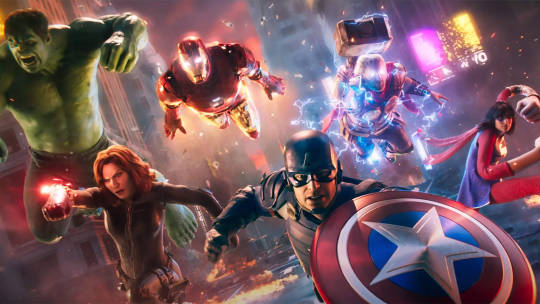
Oh, Marvel’s Avengers. I know you expected to be on more prestigious Top 10 lists than mine. Truthfully, I debated whether or not you should be here. But I had to search my soul (stone) on this one. Really assemble my feelings. Tony Stark my thoughts (?). Here’s the short of it: Marvel’s Avengers has a great story campaign with a surprising amount of emotional weight thanks largely to Kamala Khan’s quest to reassemble the heroes of her youth. Once the final cutscene ends, though, players were expected to take their play box of Marvel heroes, jump online, and duke it out against hordes of villains for the privilege of precious loot and level gains. It would be impossible to get bored because Crystal Dynamics was going to continually Bifrost in new quests, cosmetics, and heroes -- for free!
Except, after fans blasted through the campaign (took me a solid weekend), they found a multiplayer mode filled with repetitive fights against non-descript A.I.M Bots, a handful of dull, un-Marvelous environments (the PNW?! In a video game?! Wowwee!), and a grind for gear that became useless minutes after it was equipped. Oh, and bugs. Tons of bugs. It must be hard for A.I.M. to take earth’s mightiest heroes seriously when they’re falling through the fucking earth every other mission.
So why the Kevin Accolade™? Of all the mistakes and underbaked ideas, Crystal Dynamics got the most important thing right: they made me feel like I was a part of the Avengers. Cutting through the sky as Iron Man; dive bombing, fists-first as the Hulk; firing gadgets at cronies as Black Widow; cracking a row of skulls with Cap’s shield… Avengers is a brawler on super soldier serum.
The combat is crunchy and addictive, and surprisingly deep once you unlock your character’s full suite of skills and buffs. The gear matters little. But choosing a loadout that works for you -- like ensuring enemy takedowns grant you a health orb every time or turning area clearing attacks to focused beams of hurt -- does matter. When it comes to games with disastrous launches, Avengers is the most deserving of a triumphant comeback story because, if you clear the wreckage, I think there’s a solid game here. If I was able to spend hours playing it in its roughshod state, I can see myself digging in for the long-term once it’s polished up and given a healthy dose of content. You know...if Square Enix doesn’t outright abandon it.
9. STREETS OF RAGE 4
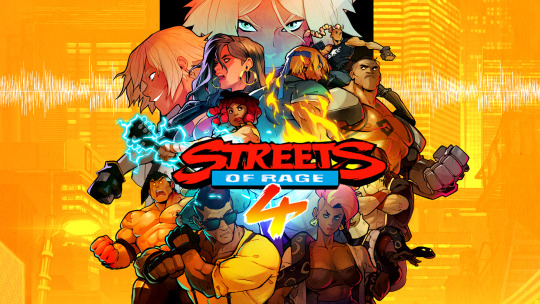
Here’s a fact about me: I love beat ‘em ups. From Final Fight to X-Men to The Simpsons, I prioritized my quarters for the beat ‘em up machines (and House of the Dead simply because House of the Dead fuckin’ owns). Unfortunately, Streets of Rage wasn’t in arcades, and I didn’t own a Genesis growing up, so I didn’t get around to the series until Sega re-released as part of a collection. Though my history with the 29 year old brawler is shorter than some, the basics stand out out right away: it’s an awesome side-scrolling brawler filled with zany character designs and high octane boss fights.
SoR4 nails that simple spirit while adding an electric soundtrack, buttery smooth animations, and an art style that looks like a comic book in motion. You can button-mash your way through the game or master your timing to combo stun the shit out of bad guys. Same screen co-op is a requisite for the beat ‘em up genre but I have to call it out nonetheless given that it's next to obsolete these days. The story campaign is, of course, finite but a stream of unlockables and a Boss Rush Mode pad out the package nicely.
I really don’t have to go on and on. I’m on board with any game that captures the arcadey high of classic beat ‘em ups, and Streets of Rage 4 does it with flare.
8. RESIDENT EVIL 3 REMAKE
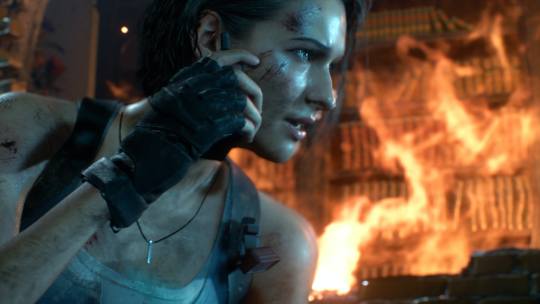
Resident Evil 2’s remake was my game of the year in 2019. It’s a pitch perfect revision that captures the pulse-pounding fear of the original while beautifully updating its graphics and gameplay for modern audiences. The most striking aspect of RE2’s remake is how it expands and reconfigures the classic game’s environments and set pieces. Capcom managed to recontextualize, and even improve on, the original’s design while staying faithful to its tone and atmosphere.
Resident Evil 3’s remake is less successful in modifying and improving on its source material. If the game feels like it was handled by a different team than RE2R, your gamer hands have good eyes (roll with it). It was developed by a separate internal team (three different teams, in fact), but that’s actually one of many choices mirroring its 1999 forebear. Just like the original, RE3R is a tighter (i.e. shorter) experience that launched less than a year after its predecessor. And just like the original, the game skirts away from survival horror in favor of action horror.
Unlike last year’s remake, however, RE3R paints in broad strokes with the original material much in the same way that 2004’s Dawn of the Dead remake shared a vague resemblance with Romero’s ‘79 classic. Capcom at least nails down what matters: you play as Jill Valentine, beaten and discredited after the Arklay Mountains incident, during her last escape from the zombie besieged Raccoon City. Her exit is complicated by Nemesis, a humanoid missile that relentlessly pursues her from minute two of the game. Her only chance of making it out alive is by teaming up with a gaggle of Umbrella dispatched mercenaries, including an overly handsome fellow named Carlos Oliveras that you control for a spell. But fans struggled to get over what Capcom didn’t remake. Several enemies, boss fights, and a “divergent path” mechanic that had you choose how best to escape the Nemesis in a pinch were omitted from the remake. Even an entire section set in a clock tower was cut. But, let’s be honest, the biggest omission is a secret ending where Barry Burton saves the day using only his beard. For real, YouTube that shit.
If you look at what the remake does instead of what it doesn’t, you’ll find a lightning paced action game highlighted by tense, one-on-one fights against the constantly mutating Nemesis. The tyrant’s grotesque transformations evoke the mind-rending, gut turning creature designs found in John Carpenter's The Thing. It’s sad that Nemesis doesn’t pursue you through the levels as diligently as he did in the original, or as Mr. X had in last year’s remake, but these “arena fights” end up being harrowing and fun, culminating in a memorable final encounter. The remake also treats us to the best incarnation of Jill to date. She’s a cynical badass, exasperated at how Umbrella upended her life, and can take a plunge off of a building yet still muster enough energy to call Nemesis a bitch. RE3R also shines thanks to its snappy combat, including a contextual dodge that feels rewarding to pull off, less bullet-sponge enemies than RE2, and an assortment of weapons to get you through Jill’s Very Bad Night(s). It makes for a necessary, though shorter, companion to last year’s stellar remake.
7. HADES

I’m experiencing a new type of shame including a title that I haven’t beaten on my Top 10 list, but I can assure you that I’ve dumped hours into its addictive death loop. It’s probably because of my resistance to looking up any tips, but given the skill-check nature of the difficult boss fights, I’m almost afraid the top shelf advice will amount to “die less, idiot.”
My failings aside, Hades is brilliant. It’s the perfect merger of gameplay and storytelling. You play as Zagreus, son of Hades, and your entire goal is to escape your father’s underworld domain. You pick from a selection of weapons, like a huge broadsword or spear, and attempt your “run,” seeing how far you can make it before an undead denizen cuts you down. It’s familiar roguelike territory, but where Supergiant separates their game from the pack is in the unique feeling of constant progression, even as you fail. With each run, not only is Zagreus earning a currency (gems or keys) that unlock new skills that make the next go a little easier, you’re also consistently treated to new lore. The fallen gods and heroes that line your father’s hall greet you after each death and provide a new insight into their world. The writing is bouncy and hilarious, the voice acting ethereal and alluring, and the character designs could make a lake thirsty.
Supergiant’s stylistic leanings are at their peak here. They’ve managed the impossible feat of making failure feel like advancement. Sure, it totally fucks up other roguelikes for me, but that’s okay. None of those games have Meg.
6. DEMON’S SOULS
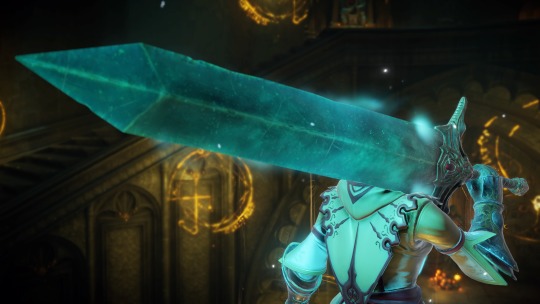
Whereas Capcom takes liberties with their remakes, Bluepoint took the Gus Van Sant approach and made a 1:1 recreation of the 2009 title that launched the “Soulslike” genre. The dividing difference is a 2020 facelift brought to us by way of the PlayStation 5’s next-gen horsepower. There’s been online arguments (surprise) regarding the loss of Fromsoftware’s visual aesthetic in translating the PS3 original in order to achieve a newfound photorealism. It’s true, some beasties lose their surreal weirdness -- a consequence of revisiting designs without the worry of graphical or time constraints -- but the game’s world is still engrossing, morbid, and bleakly gorgeous.
That’s not to say all Bluepoint did was overhaul the graphics and shove this remake out the door. No, their improvements are nuanced, under-the-hood changes that gently push the genre into the next-generation. For one, the loading times are incredible. You could hop between all five archstones in under a minute if you wanted. And this game is a best DualSense controller showcase outside of Astro’s Playroom. You can feel a demonstrable difference between hitting your sword against a wall compared to connecting it with an attacking creature. Likewise, the controller rumbles menacingly as to let you know enemies are stomping across a catwalk above you. “Better rumbles” was not on my wish list of next-gen features, but the tactile feedback goes great lengths to make you feel like you’re there.
Granted, sticking so closely to the original means its pratfalls are also carried over to the next-gen. The trek between bonfire checkpoints is an eternity compared to the game’s successors, and Fromsoftware hadn’t quite mastered the sword ballet of boss fights prevalent in Dark Souls. Instead, a handful of bosses feel more like set pieces where you’re searching for the “trick” to end it versus having to learn attack patterns and counters. Still, it’s easy to see the design blueprint that bore a whole new genre. From having to memorize enemy placements to hunting down the world’s arcane secrets in the hopes of finding a new item that pushes the odds in your favor. Bluepoint’s quality of life improvements only make it kinder (not easier) to plunge into the game, obsess over its idiosyncrasies, and begin to master every inch of it. That is until you roll into New Game+ and the game shoves a Moonlight Greatsword up your ass.
5. YAKUZA: LIKE A DRAGON
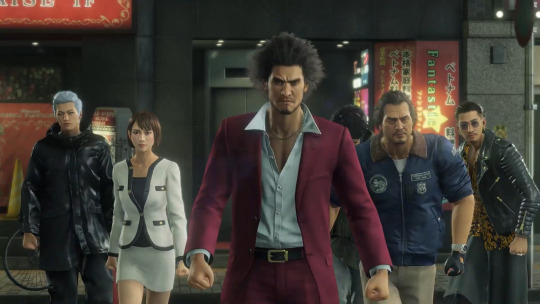
Here’s a fact about me I’m sure you don’t know: I love beat ‘em ups. Streets of Rage 4 had an easy time making it on this list because it can be classified as both a “beat ‘em up” and “good.” Here’s another fact about me: I’m not the biggest fan of JRPGs. I’m told this is not because of any personal preferences I harbor, but rather due to a distinct lack of culture. I’ve made peace with that. At least my uncultured ways are distinctive.
But my disinterest in JRPGs is notable here because it illustrates how very good Like A Dragon is. Transitioning the Yakuza series from a reactive brawler (entrenched in an open-world SIM) to a full-blown turned-based RPG was risky -- especially 8 entries into the mainline series -- but it pays off explosively for Like A Dragon. Not only does the goofiness, melodrama, and kinetic energy translate to an RPG -- it’s improved by it. Beyond a new protagonist -- the instantly likable and infinitely affable Ichiban Kasuga -- we’re finally treated to an ensemble cast that travels with you, interacts with you, and grows with you. Their independent stories weave into Ichi’s wonderfully and end up mattering just as much as his.
The combat doesn’t lose any of its punch now that you’re taking turns. In fact, it feels wilder than ever and still demands situational awareness as your enemies shift around the environment, forcing you to quickly pick which move will do the most damage and turn the fight in your favor. RGG purposefully made Ichi obsessed with Dragon Quest (yes, specifically Dragon Quest) as an excuse to go ham and morph enemies into outlandish fiends that would populate Ichi’s favorite series. It’s a fun meta that never loses its charm.
This is the best first step into a new genre I’ve ever seen an established franchise make and I hope like hell they keep with it for future outings -- and that Ichi returns to keep playing hero. There’s plenty of callbacks and treats for longtime fans, but RGG did a masterful job rolling out the virtual carpet for a whole new generation of Yakuza fanatics.
4. GHOST OF TSUSHIMA
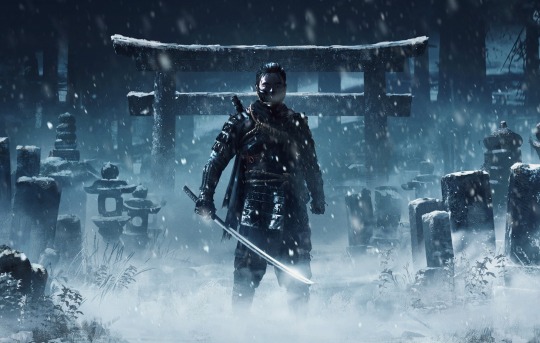
Sucker Punch’s dive into 13th century Japan doesn’t redefine the open-world genre. But like Horizon: Zero Dawn before it, Ghost of Tsushima takes familiar components of the genre and uses them exceptionally well, creating an airtight experience that can’t help but stand out. I can tell Sucker Punch mused on games like Assassin’s Creed and Breath of the Wild, tried to figure out what makes those games tick, and then brought their own spin to those concepts. You can feel it in their obsession to make traversal through the environment as unobtrusive as possible, letting the wind literally guide you to your destinations instead of forcing the player to glue their eyes to a mini-map. You can feel it in how seamless it is to scale a rooftop before silently dropping on a patrol, blade first. You can feel it in the smoothness behind the combat as your sword clashes against the enemy’s. Every discrete part is fine-tuned yet perfectly complements the whole. The game is silk in your hands.
The mainline story can be humdrum, though. It mirrors the beats of a superhero origin story, which isn’t surprising when you account for the three Infamous titles and satellite spinoffs under Sucker Punch’s belt. But Jin Sakai’s personal journey outshines the cookie-cutter plot. His gradual turn from the strict samurai code to a morally ambiguous vigilante lifestyle (to becoming, eventually, a myth) is a fascinating exploration in shifting worldviews. This is bolstered by the well-written side-missions dotting your quest, some of which play out in chains. It’s these diversions about melancholy warriors and villagers adjusting to life under invasion that end up being the essential storytelling within the game. Whatever you do, don’t skip a single one.
Before GoT can overstay its welcome with collectible hunting and stat-tree building, the ride is over. If you find exhaustive open-world titles, well, exhausting, Sucker Punch coded enough of a campaign to sticking the landing and not more. But if you were looking for more, the game’s co-op Legends mode is the surprise encore of the year. It strikes its own tone, with vibrant, trippy designs, and a progression system that embarrasses other AAA titles in the space (I mean Avengers. I’m talking about Avengers).
3. THE LAST OF US PART II

The Last of Us is widely regarded as a masterpiece. It’s a melancholic trek through a realistic post-apocalypse, driven by the budding bond between a world-weary survivor and a would-be teenage savior. The fungal zombies and violent shootouts with scavengers were scary and exciting, but ultimately just window-dressing compared to the level of complicated, and honest, human emotion on display throughout the tale. While a segment of detractors helpfully pointed out that The Last of Us’ story isn’t unique when compared to years of post-apocalyptic books, comics, and movies, that argument seems to forget that a narrative more concerned with the human protagonists’ connections to one another instead of saving the world or feeding into a hero complex is pretty unique for games -- especially a high profile, AAA budgeted game.
Still, fans made heroes out of Joel and Ellie because of their own connection to their journey. And that connection is almost instantly challenged in the opening hours of The Last of Us Part II to heartbreaking effect. But I’m here to tell you that any other sequel would have been dishonest to the legacy of the original game. To be given a hero’s quest as a continuation, an imagined sequel where Joel and Ellie do battle against the viral infection that’s swept the earth, would have been a despicable cash-in. It would have been a mistake to follow-up the original’s careful examination of human nature just to placate an audience that seems to have missed the point Naughty Dog made. The Last of Us Part II hurts. But it has to or else it wouldn’t have been worth making. It’s a slow-burn meditation on the harmful ripples revenge creates, how suffering begets suffering, and how, if we don’t break the cycles of violence we commit to, suffering will come for us.
To drive this point, we’re given two distinct perspectives during the meaty (and somewhat overlong) campaign, split between Ellie Williams, the wronged party seeking revenge, and Abby Anderson, an ex-Firefly whose actions set the sequel into motion. The greatest trick Naughty Dog pulls off isn’t forcing us to play as a character we hate, it’s giving us reasons to emphasize with them. It was gradual, and despite some heavy-handed moments meant to squeeze sympathy out of the player (how many times do I have to see that fuckin’ aquarium?!), I eventually came to love Abby’s side of the story. The obvious irony being that she unwittingly walks the same path Joel did in the original.
My love for the narrative shouldn’t distract from how well designed the world is. Being a King County local, the vision of a ruined Seattle strikes an uncomfortable note -- it was eerie seeing recognizable buildings overgrown with vegetation but otherwise devoid of life. Maybe the heart-wrenching story also distracts from the fact this game is, by definition, survival horror. Exploring toppled buildings in the dark, hearing the animalistic chittering of the infected, defending yourself with limited resources… It manages to be a scarier entry into the genre in 2020 than even RE3R. There’s a particular fight in a fungus covered hospital basement that easily goes down as my Boss Fight of the Year. Human enemies make for clench-worthy encounters, too, with incredibly adept AI that forces you to keep moving around the environment and set traps to avoid getting overwhelmed.
Admittedly, the subject matter -- or more to the point, the grim tone -- was tough to stomach during an actual pandemic which has happily treated us to the worst of human nature. Still, The Last of Us Part II is absolutely worth playing for its balance of mature themes and expertly crafted world, and the way it juxtaposes beauty and awfulness in the same breath.
2. SPIDER-MAN: MILES MORALES
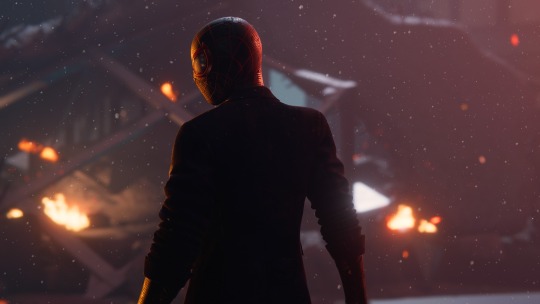
The most impressive thing about Miles Morales is that, despite being a truncated midquel rather than a full-blown sequel, it’s a better game than 2018’s Spider-Man. It’s not because of the instantaneous loading times or the fancy ray-tracing techniques used on the PS5 version of the game. Rather, it’s how it takes the joyride of the original game and hones it into a laser focused experience filled to the brim exclusively with highs. Like Batman: Arkham Asylum going into Arkham City, Miles starts the game off with his mentor’s best abilities and tools. From there, he discovers his own powers, his bioelectric venom strike, which ends up feeling like the missing ingredient from the first game’s combat.
Your open-world playground -- a locale in the Marvel universe called “New York City” -- is exactly the same size as the previous installment, which helps avoid making the game feel “lesser.” But Insomniac wisely consolidated the random crimes Peter faced into a phone app that Miles can check and choose which activity to help out with. Choices like this really trim the fat from the main game and help alleviate “the open-world problem” where the story’s pacing suffers because players are spending hours on end collecting feathers. This is great because Miles’ story is also great. The narrative kicks Peter out pretty early on, focusing on how Miles assumes the role of city protector, primarily focused on his new home in Harlem. Insomniac avoids retreading the same path paved by Into the Spider-Verse by telling a relatable tale where Miles defines his identity as Spider-Man. With a strong cast led by Nadji Jeter as Miles, the game lands an impactful story that weaves its own new additions to Miles’ mythos (light spoiler: I loved their take on The Prowler).
Miles Morales was pure virtualized joy from start to finish. A requirement of the platinum trophy is to replay the entirety of the game on New Game+. I didn’t hesitate to restart my adventure the minute the credits were over. Everything I loved about 2018’s Spider-Man is here: the swinging, the fighting, the gadgets, the bevy of costumes. But it gave me a new element I adore and can’t see Insomniac’s franchise proceeding without: being Miles Morales.
1. FINAL FANTASY VII REMAKE
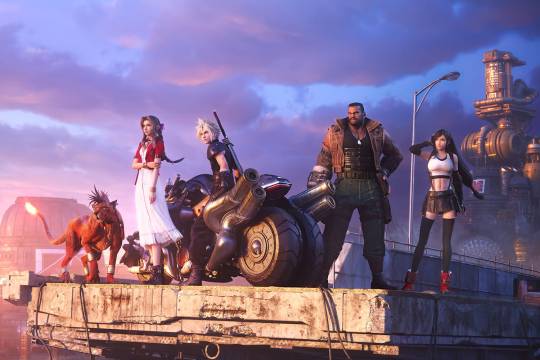
I love subversive media, I do. And Square Enix’s “remake” of one the most beloved video games ever made subverts expectations by openly acknowledging that, yes, the original story you love exists and is consistently referenced in this game. But this is not that story. This is something..else. Because the truth is, SE could never have recreated FFVII and delivered a title that matched the Sacred Game fans created in their heads. That impossible standard is like an imagined deity, given power by feeding on raw nostalgia reinforced by years of word-of-mouth and appearances on Top 100 lists. I’m not saying FFVII is a bad game or that fans give it too much credit. Not at all. There’s a reason it’s so influential -- it’s good! But memory works in a funny way over time. We have a tendency to codify our perception of a thing over the reality of it. The connection we make to certain media, especially when introduced at a young age as FFVII had been to a whole generation of fans so long ago, creates a legend in our heads. Unfortunately, it’s a legend no developer could achieve when tasked with remaking it.
So Square...didn’t. Final Fantasy VII Remake has the same characters, setting, and plot beats as the first third of the original game but it’s not the same game, nor is it a remake of it in the traditional sense. It’s something new. And I fucking love that about it.
Everything is reconfigured, including the combat. After years of trying to merge RPG mechanics with more approachable (and marketable) real-time action (see FFXV and the Kingdom Hearts games for examples), Square Enix finally landed on the perfect balance. You fully control Cloud on the battlefield, from swinging your impossibly huge buster sword to dodging attacks. The ATB gauge (no one knows what the acronym stands for -- that information has been lost to time) gradually fills up, letting unleash powerful moves. But best of all, you fight in a party, and you can switch who to control on the fly.
That may not sound revolutionary, let alone for a Final Fantasy, but each character has a completely unique feel and suite of moves. At times, it feels like playing a Devil May Cry game where you can switch between Dante, Vergil, and Nero on the fly (that’s a free idea, Capcom. Hire me, you cowards). You can soften up an enemy with Cloud’s buster to increase their stagger meter, switch to Barret for a quick gatling barrage, and finally switch to Tifa to crush them with her Omnistrike. You can accomplish this in real-time or slow down the action to plan this out. It’s a great mix of tactics and action that prevents the game from feeling like a mindless hack n’ slash.
What really, really works here is the character work. Each lead walks in tropes first, but the longer you spend with the members of your party, the more their motivations and fears are laid out. You end up having touching interactions with just about the whole main cast. There’s a small segment, after Cloud saves Aerith from invading Shinra guards, that the two make an escape via rooftop.They make light conversation -- small talk really -- but it’s exchanges like this that feel genuine, perfectly framing their characters (stoic versus heartfelt), and grounding an otherwise larger-than-life adventure.
Many bemoaned the fact that FFVIIR only revisits a small portion of the original game, but I think it was a brilliant choice -- to massively expand on areas we only got to see a little of in the original. I honestly didn’t want to leave Midgar. It’s a world rife with conflict and corporate oppression, sure, but Midgar is beautifully realized, from the slums below the plates, populated with normal people trying to make the best of life, to the crime controlled Wall Market, adorned with gaudy lights and echoing honky tonk tunes. It very well may be years before FFVII’s remake saga comes to a close, but if each entry is paved with as much love and consideration and, yes, storytelling subversion as this introductory chapter… It’ll be worth the wait.
8 notes
·
View notes
Text
Gaming Roundup: Holiday 2017 Edition
1 of 10
1. Destiny 2
Courtesy of Activision
A more-than-worthy successor to the 2014 phenomenon, Destiny 2 shows how closely Bungie listened to its community, building on the co-op and competitive aspects that made the original so great and improving on the story, which most players agreed was lacking. Destiny 2’s campaign is a complete, satisfying experience, even if it only deepened the mystery around the Traveler’s origins. Even leveling up feels simpler, if only because most veteran players have already established their preferred playstyle, taking tough decisions about which direction to move your character out of the equation. Shooter tradition almost demands that you finish the campaign before hopping into multiplayer, but it’s probably smarter to mine as much XP and gear as you can through crucible matches before going too far solo. With a stronger character, you’ll breeze through the story. The Collector’s Edition of this game is one of the crazier editions we’ve seen; it comes with an ornately detailed leather bag and triangular metal tube, modeled after the one carried by a character named Suraya. That tube opens up and folds out into a portable solar-powered USB charging station. It also includes a bevy of printed collectibles, a steelbook edition of the game, and a pass for DLC packs I and II.
Available on: PS4, Xbox One, PC
2 of 10
2. Super Mario Odyssey
Courtesy Image
On the surface, we’ve got this: The same Mario game you’ve played a hundred times, only now he’s got a boomerang hat. Play beyond the first 30 minutes, though, and you’ll discover an almost flawless game in every detail, sure to be one of your new personal faves. Switch owners were hoping for a worthy Mario game to help cement the system as a success. Nintendo over-delivered in spades, shipping a game that leapfrogged to the top of the Game of the Year discussion, and somehow entered the Best Game of All Time discussion. It’s hard to argue with any of that buzz. The rhythm, balance, and pace of Super Mario Odyssey is perfect, a confounding feat considering its open-world nature. At times it can feel like Nintendo has a patent on human curiosity and joy. That’s how effortlessly this game can make you feel like a kid again.
Available on: Nintendo Switch
3 of 10
3. Call of Duty WWII
Courtesy of Activision
The first campaign stage on Normandy Beach feels like a playable version of the opening scene from Saving Private Ryan. It’s brutal and frantic, and sets the tone for this welcome return to Call of Duty’s roots. Multiplayer and zombie modes are as tight as ever, but what makes this one stick with you is a story that respects the real sacrifices made by the Greatest Generation. That lifeline to the real world gives it some staying power that’s just not possible to achieve in a far-flung sci-fi adventure. As long as this much love and attention goes into each iteration, we’re completely fine with COD coming out every year.
Available on: PS4, Xbox One, PC
4 of 10
4. Wolfenstein II: The New Colossus
Courtesy of Bethesda
A story about Nazis taking over America wasn’t supposed to have the kind of real-world resonance that it currently does, but that’s where we are. Setting aside that unpleasant reality, The New Colossus is a brilliant follow-up to 2014’s The New Order, with you picking up right where BJ Blazkowicz left off (spoiler alert: he survived the first game’s climactic scene). Just as it did with the first game, developer Machine Games eschewed a multiplayer mode altogether, focusing entirely on an engrossing single-player experience. That shines through in everything from its smooth gameplay mechanics to its distinct characters you can actually remember. It’s a bold, old-school mentality, but the payoff is huge. Makes you wish more developers would have the guts to follow suit.
Available on: PS4, Xbox One, PC
5 of 10
5. South Park: The Fractured But Whole
Courtesy of Ubisoft
This giant, 15-hour episode of South Park is so funny and packed with clever satire it deserves to be mentioned with the best South Park multi-episode arcs ever. (It’s right on par with the Imaginationland trilogy, the Black Friday trilogy, and the Coon series.) That would be reason enough to make this a mandatory purchase for South Park fans, but the fact that it’s a surprisingly deep and well-crafted RPG seals the deal. You have a ton of options for character development, from how you look to how you fight. The racial commentary is also sadly spot on. For starters, you select the difficulty of the game with a skin color slider—white is easy, tan is difficult, black is very difficult. As you get deeper into the game there’s a sequence where the South Park cops task you with taking down a supposedly infamous drug dealer, who turns out to just be a black guy in a nice house. Ouch. That’s South Park at its best and most biting.
Available on: PS4, Xbox One, PC
6 of 10
6. Gran Turismo Sport
Courtesy of Sony
It’s been four years since a Gran Turismo game came out, and with Forza firmly in command of the biggest virtual garage in gaming, GT put its efforts elsewhere, namely online play and VR. Serious players will get a kick out of the online mode. Over time, it’s easy to imagine that players with low sportsmanship ratings—those involved in the most pileups—will be shunned and shamed. While you can’t take VR online or into the campaign, it’s a pretty awesome arcade experience (if you’re not susceptible to motion sickness). With the price of the VR headset dropping $100 for the holidays, and with a steadily growing library to go with it, Gran Turismo Sport stands as another worthy selling point, and you can now get it bundled with the headset.
Available on: PS4
7 of 10
7. Crash Bandicoot: N-Sane Trilogy
Courtesy of Activision
Crash never looked so good, from the newly rendered opening sequence to all three PS One games remastered in HD to smooth out his jagged polygons. Those are welcome changes because the core gameplay has aged well, even for an on-the-rails 3D platformer. Everything is slick and responsive, and once you get going you won’t rest until you smash every crate on every level. One downer: long load times are one of the few carryovers from '90s games that don’t satisfy any nostalgic urge.
Available on: PS4
8 of 10
8. Forza 7
Courtesy of Microsoft
What was missing from a racing series that has given you an accurate representation of nearly every car on the planet? You probably didn’t say story mode, but you won’t be sorry that that’s what you got. It’s actually a perfect way for the game to sink its hooks into you and get you to sample a ton of different tracks, cars, and weather conditions right out of the gate. The replay value is huge; you can unlock a whopping 700 lovingly detailed cars. Forza 7 is also the poster child for enhancements on the Xbox One X, but it looks good no matter how you’re playing.
Available on: Xbox One, PC
9 of 10
9. Middle Earth: Shadow of War
Courtesy of WB Games
The first Middle Earth game played fast and loose with Tolkien lore while borrowing heavily from the Arkham series gameplay mechanics. The result was a shock: tight and cohesive, and hands down the best game of 2014. Shadow of War finds the co-main characters Talion and Celebrimbor forging a new ring of power to destroy the inhabitants of Mordor for a story that leaves off just before the events of The Lord of the Rings. Developer Monolith jacked up the dials on everything that worked in the original: the nemesis system, your ability tree, and the brutal combat animations, which have all been expanded and polished. For an open world game, the pace remains lightning fast because it’s just so densely packed. Wander in any direction and you’ll discover something, be it a collectible, a side mission, or a pack of enemies to sneak up on.
Available on: PS4, Xbox One, PC
10 of 10
10. Cuphead
Courtesy of Microsoft
Styled after early 20th century cartoons, Cuphead has been the subject of much anticipation since it was first teased three years ago. It’s a standard platformer, but one that looked so unique everyone wanted to pick it up. Now that it’s finally out we know what took so long: every frame you see was drawn by hand, from the main characters Cuphead and Mugman, to the level bosses, to the top-down map where the locations pulse with life, an intentional side-effect of hand animation. And in true throwback fashion, this gameplay is solid, difficult, and addictive. For $20, you can’t say no to this.
Available on: Xbox One, PC
TOP 10 GAMES OF THE YEAR
1. Horizon Zero Dawn
2. Super Mario Odyssey
3. Wolfenstein II: The New Colossus
4. Destiny 2
5. Zelda: Breath of the Wild
6. South Park: The Fractured But Whole
7. Middle Earth: Shadow of War
8. Injustice 2
9. For Honor
10. Call of Duty WWII
Previous Next
from Bodybuilding Feed https://www.muscleandfitness.com/features/edge/gaming-roundup-holiday-2017-edition via http://www.rssmix.com/
0 notes